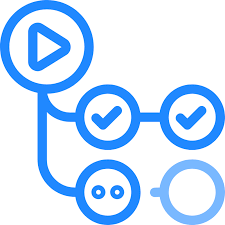Spacelift has built a solid reputation for helping teams manage infrastructure as code across multiple clouds – but it’s not the only player in town. Whether you’re after a simpler UI, more flexible pricing, or deeper integration with your existing stack, there are plenty of platforms that can fill the same role (and sometimes do it better). In this article, we’ll look at the best Spacelift alternatives – the kind of tools that help developers move faster, automate smarter, and skip the DevOps drag.

1. AppFirst
As one of the strong Spacelift alternatives worth checking out, AppFirst was built for teams that want to automate infrastructure without the usual complexity. It focuses on letting developers define what their application needs while handling everything underneath — from provisioning to compliance and cost tracking. Instead of maintaining Terraform files or managing custom CI/CD scripts, teams can deploy faster and stay confident that their environments remain secure and consistent.
AppFirst approaches infrastructure automation from the application side, not the infrastructure side. That means developers stay focused on building and shipping products while it takes care of security, monitoring, and cloud setup behind the scenes. AppFirst works across AWS, Azure, and GCP, giving teams flexibility to scale or switch clouds without starting over. It’s an alternative that cuts down the time spent on DevOps chores and removes a lot of the friction that comes with managing infrastructure manually.
נקודות עיקריות:
- Automatic provisioning of compliant infrastructure across clouds
- Works with AWS, Azure, and GCP
- Built-in monitoring, alerting, and audit logging
- Cost visibility per app and environment
- SaaS or self-hosted deployment options
Who it’s best for:
- Teams looking for a Spacelift alternative with less setup and overhead
- Developers who prefer focusing on product code instead of infra scripts
- Companies standardizing multi-cloud infrastructure management
- Fast-moving teams that want to stay compliant without maintaining DevOps pipelines
פרטי קשר:
- אֲתַר אִינטֶרנֶט: www.appfirst.dev

2. Firefly
Firefly positions itself as a cloud infrastructure automation platform designed to give teams broader visibility and control across their environments. They focus on making infrastructure-as-code (IaC) easier to manage by automating key workflows such as provisioning, codification, and drift detection. Rather than depending solely on what’s defined in IaC, Firefly scans the entire cloud environment to uncover unmanaged resources and configuration gaps, helping teams maintain consistency and reduce manual oversight.
Their approach combines real-time monitoring, automatic codification, and built-in governance capabilities, allowing organizations to track every asset and change across multiple clouds. Firefly supports integration with existing CI/CD pipelines and a variety of IaC frameworks, offering flexibility without forcing teams into one specific setup. This makes it a practical option for those who want to simplify IaC management while maintaining visibility and control over fast-changing cloud infrastructure.
נקודות עיקריות:
- Automated provisioning and orchestration for multiple IaC frameworks
- Continuous scanning and inventory of cloud assets, including unmanaged ones
- Real-time drift detection and remediation
- Cloud codification that generates IaC in several languages
- Governance-as-code with integrated policy management and rollback options
Who it’s best for:
- Teams that need deeper visibility across multi-cloud environments
- Organizations managing a mix of managed and unmanaged cloud assets
- Engineers looking to automate IaC creation and drift remediation
- Companies that prefer using their existing CI/CD workflows with added governance
פרטי קשר:
- Website: www.firefly.ai
- E-mail: contact@firefly.ai
- Twitter: x.com/fireflydotai
- LinkedIn: www.linkedin.com/company/fireflyai
- Address: 311 Port Royal Ave, Foster City, CA 94404
3. Terraform Cloud
Terraform Cloud is a managed service built around HashiCorp’s Terraform, designed to help teams collaborate on infrastructure-as-code without having to manage their own backend setup. They provide a shared environment where multiple users can plan, apply, and review infrastructure changes through a consistent workflow. This helps teams maintain version control and ensure that deployments stay aligned with approved configurations across different environments.
Their platform supports integrations with major version control systems, CI/CD tools, and cloud providers, giving users flexibility in how they manage their infrastructure pipelines. Terraform Cloud also includes features like remote execution, policy enforcement, and workspace management, which can help teams maintain security and governance standards as they scale. For teams looking at Spacelift alternatives, Terraform Cloud offers a familiar ecosystem with a focus on collaboration and automation through established Terraform practices.
נקודות עיקריות:
- Centralized workspace for managing Terraform projects
- Remote plan and apply functionality with state management
- Integration with Git-based version control and CI/CD tools
- Policy and governance controls for secure deployments
- Supports multiple cloud providers within a single platform
Who it’s best for:
- Teams already using Terraform looking for a managed collaboration platform
- Organizations that need consistent IaC workflows across multiple environments
- Developers who want version control integration for infrastructure changes
- Companies that prefer a stable, policy-driven alternative to Spacelift
פרטי קשר:
- Website: app.terraform.io

4. Scalr
Scalr provides a Terraform and OpenTofu automation platform designed for platform teams that want to offer self-service capabilities to developers without losing control or visibility. Their approach centers on creating isolated environments for each team, reducing interference and enabling independent work. Scalr allows teams to use Terraform or OpenTofu through different workflows, including CLI-driven, GitOps, or no-code options, giving developers flexibility while maintaining organizational standards.
They focus on helping teams scale infrastructure automation without the usual growing pains of inconsistent policies or lack of governance. Scalr includes tools for policy enforcement, drift detection, and observability, along with integrations for Datadog, Slack, and Teams to monitor activity in real time. The platform also supports module registries, role-based access control, and pipeline management to ensure consistent operations across large engineering teams. For organizations evaluating Spacelift alternatives, Scalr stands out for its flexibility and support for both Terraform and OpenTofu users.
נקודות עיקריות:
- Supports Terraform and OpenTofu with flexible workflows (CLI, GitOps, no-code)
- Isolated environments for each team to ensure autonomy and stability
- Built-in role-based access control and governance policies
- Private module registry for standardization and reusability
- Integrations with Datadog, Slack, and Teams for monitoring and alerts
Who it’s best for:
- Platform teams managing multiple development environments
- Organizations standardizing Terraform or OpenTofu usage across teams
- Developers who prefer flexible workflows and familiar tooling
- Companies looking for self-service infrastructure management with strong governance
פרטי קשר:
- Website: scalr.com
- Twitter: x.com/scalr
- LinkedIn: www.linkedin.com/company/scalr

5. Pulumi
Pulumi offers a platform for managing cloud infrastructure through code, giving teams flexibility to work in programming languages they already know. Instead of relying on a domain-specific syntax, users can define and deploy infrastructure with TypeScript, Python, Go, C#, Java, or YAML. This approach allows them to reuse familiar tools, IDEs, and testing workflows. The platform integrates infrastructure as code, secrets management, and policy governance into a single system, aiming to reduce the need for separate tools or complex integrations.
Beyond code-based provisioning, Pulumi includes features for automation, visibility, and governance across multi-cloud environments. Its AI component, called Neo, assists with generating configurations, reviewing pull requests, and troubleshooting deployments. Pulumi’s structure is built for both individual developers and enterprise-scale teams looking for consistent and policy-driven infrastructure management.
נקודות עיקריות:
- Supports multiple programming languages for defining infrastructure.
- Built-in policy governance and secrets management.
- AI-powered automation and insights with Neo.
- Centralized visibility and compliance tracking across environments.
- Integrates with popular tools like HashiCorp Vault, AWS Secrets Manager, and Azure Key Vault.
Who it’s best for:
- Teams already using general-purpose programming languages in their workflows.
- Organizations managing multi-cloud or hybrid environments.
- Developers seeking a more software-driven approach to IaC.
- Enterprises that need built-in governance and security controls.
- Platform teams building internal developer platforms or self-service infrastructure portals.
פרטי קשר:
- Website: www.pulumi.com
- Twitter: x.com/pulumicorp
- LinkedIn: www.linkedin.com/company/pulumi
- Address: 601 Union St., Suite 1415 Seattle, WA 98101

6. GitHub Actions
GitHub Actions gives development teams a way to automate their workflows directly within GitHub, from testing and building to deployment. It works through YAML-based configuration files that define when and how workflows should run. Since it’s built into GitHub, Actions naturally integrates with repositories, making it easy to trigger processes from pull requests, pushes, or other events. It supports most major programming languages and environments, and users can run jobs on GitHub’s hosted runners or their own infrastructure.
One of the main advantages of GitHub Actions is its flexibility. Developers can combine predefined steps from the Actions Marketplace or create their own custom actions using JavaScript or Docker containers. This flexibility allows it to support everything from simple automation tasks to complex CI/CD pipelines. Because everything happens within the GitHub ecosystem, it reduces the need for external integrations and provides a single place to manage version control, testing, and deployment.
נקודות עיקריות:
- Built-in CI/CD and automation directly inside GitHub repositories.
- Supports most programming languages and operating systems.
- Large marketplace of prebuilt actions and reusable workflows.
- Allows custom automation using JavaScript or container actions.
- Can run on GitHub-hosted or self-hosted runners.
Who it’s best for:
- Teams already using GitHub for version control and collaboration.
- Developers looking for straightforward CI/CD setup without extra tools.
- Organizations that want to keep automation and code management in one place.
- Open-source projects that need free, integrated CI/CD options.
- Teams that prefer YAML-based workflow definitions with flexible triggers.
פרטי קשר:
- Website: github.com
- Twitter: x.com/github
- LinkedIn: www.linkedin.com/company/github
- Instagram: www.instagram.com/github

7. CircleCI
CircleCI provides a platform for automating software builds, testing, and deployments across different environments. It allows teams to define workflows that run on every code change, making it easier to catch errors early and maintain consistency in releases. Users can run jobs on cloud-hosted or self-hosted infrastructure and leverage features like parallelism and caching to optimize build times. CircleCI supports a wide range of languages and frameworks, which makes it flexible enough for diverse projects, from mobile apps to large-scale web applications.
The platform emphasizes integration and orchestration, connecting smoothly with tools like GitHub, GitLab, Bitbucket, and various cloud providers. Developers can also use reusable components called Orbs to simplify common tasks or create custom workflows with YAML configuration files. CircleCI provides visibility into pipelines with live logs and insights, helping teams troubleshoot faster while keeping deployments consistent. Overall, it is structured to support both simple CI/CD setups and complex automated release processes.
נקודות עיקריות:
- Continuous integration and delivery with automated workflows.
- Supports a wide range of languages and frameworks.
- Runs on cloud-hosted or self-hosted infrastructure.
- Parallelism, caching, and reusable Orbs for faster builds.
- Detailed logs and insights for debugging and pipeline monitoring.
Who it’s best for:
- Teams that need automated CI/CD for multiple projects.
- Developers using GitHub, GitLab, or Bitbucket for version control.
- Organizations looking for flexible infrastructure options.
- Teams managing both simple and complex release pipelines.
- Developers who want visibility into build and deployment processes.
פרטי קשר:
- Website: circleci.com
- Twitter: x.com/circleci
- LinkedIn: www.linkedin.com/company/circleci

8. env0
env0 focuses on streamlining infrastructure workflows for teams using Infrastructure as Code. The platform lets teams manage deployments across multiple clouds and accounts while keeping governance and cost controls in place. Users can create reusable templates, enforce policies with RBAC and policy-as-code, and track changes through Git-based workflows. This structure helps reduce risks during deployments and allows developers to move faster without losing oversight.
The platform also emphasizes visibility and collaboration, giving teams insights into deployments, drift detection, and incident response times. By automating repetitive steps and integrating with existing cloud and DevOps tools, env0 helps teams maintain consistency across projects while scaling their infrastructure. It supports both Terraform and other IaC tools, providing flexibility in how organizations structure their workflows.
נקודות עיקריות:
- Automated deployment workflows for multi-cloud environments.
- Git-based infrastructure management and policy enforcement.
- Reusable templates for standardized deployments.
- Visibility into drift, cost, and operational metrics.
- Integration with existing DevOps and cloud tools.
Who it’s best for:
- Teams managing infrastructure across multiple cloud accounts.
- Developers and platform engineers needing policy and governance controls.
- Organizations scaling IaC workflows without losing oversight.
- Teams seeking better collaboration and deployment transparency.
- Companies wanting to reduce deployment risks and speed up workflows.
פרטי קשר:
- Website: www.env0.com
- Twitter: x.com/envzero
- LinkedIn: www.linkedin.com/company/env0
- Address: 100 Causeway Street, Suite 900, 02114 United States

9. ControlMonkey
ControlMonkey focuses on connecting Terraform workflows with real-time cloud insights to manage infrastructure at scale. Their platform emphasizes end-to-end automation, letting teams generate Terraform code directly from existing cloud resources and track unmanaged assets. It also provides daily backups, drift remediation, and policy enforcement, which helps teams maintain a clear overview of their infrastructure without relying on manual checks.
The platform is designed to integrate compliance and governance into the workflow, with guardrails for security, cost, and operational policies. Users can monitor outdated modules, reconcile drift automatically, and respond to changes in the environment quickly. This approach helps teams reduce manual effort while keeping infrastructure consistent and resilient across multiple cloud accounts.
נקודות עיקריות:
- Auto-generation of Terraform code from existing cloud resources.
- Full cloud inventory with visibility into unmanaged resources.
- Automatic drift detection and remediation.
- Daily cloud backups and disaster recovery options.
- Built-in guardrails for security, compliance, and cost management.
- Insights into Terraform module usage and versioning.
Who it’s best for:
- Teams managing large or complex cloud environments.
- Developers needing full visibility into infrastructure as code coverage.
- Organizations aiming to reduce manual Terraform maintenance.
- Teams that require automated compliance and governance checks.
- Companies looking to maintain infrastructure resilience with minimal manual intervention.
פרטי קשר:
- Website: controlmonkey.io
- LinkedIn: www.linkedin.com/company/controlmonkey

10. Qovery
Qovery focuses on simplifying the deployment and management of cloud infrastructure while keeping it developer-friendly. Their platform handles application and environment management across multiple clouds, helping teams scale without needing dedicated DevOps resources. It combines automation with oversight, allowing teams to optimize performance, manage costs, and maintain security in a single interface. Users can deploy, observe, and optimize applications without juggling multiple tools or platforms.
The platform integrates security and compliance features directly into workflows, with AI-powered agents assisting in optimization and auditing. Daily monitoring, automatic scaling, and proactive recommendations aim to reduce the overhead typically associated with infrastructure management. The approach is centered around giving developers control over environments while reducing manual setup and operational work.
נקודות עיקריות:
- Simplified multi-cloud deployment and management
- Built-in security and compliance tools
- AI-assisted optimization for cost and performance
- Automatic environment scaling and management
- Integrated monitoring and observability
Who it’s best for:
- Teams without dedicated DevOps staff
- Companies managing multiple cloud environments
- Developers seeking automated infrastructure management
- Organizations prioritizing cost optimization and compliance
- Teams needing streamlined application deployment and monitoring
פרטי קשר:
- Website: www.qovery.com
- Twitter: x.com/qovery_
- LinkedIn: www.linkedin.com/company/qovery
11. Jenkins
Jenkins is an open-source automation server that focuses on continuous integration and continuous delivery. Teams can use it to automate building, testing, and deploying projects across different environments. Its plugin architecture allows integration with a wide range of tools, enabling flexible workflows and custom pipelines. Jenkins can distribute tasks across multiple machines, which helps in speeding up build and deployment processes for larger projects.
The platform is designed to be adaptable, running on multiple operating systems and supporting diverse programming languages. Its web-based interface simplifies setup and configuration, and the extensive community contributes plugins, updates, and support resources. Jenkins emphasizes flexibility and automation, letting teams shape it according to their project needs rather than imposing a strict workflow.
נקודות עיקריות:
- Supports continuous integration and delivery pipelines
- Extensive plugin ecosystem for diverse integrations
- Distributes builds and tasks across multiple machines
- Runs on Windows, Linux, macOS, and other Unix-like systems
- Web-based setup and configuration with built-in error checks
Who it’s best for:
- Development teams needing customizable CI/CD pipelines
- Projects requiring integration with multiple tools and platforms
- Teams managing large or distributed builds
- Organizations that prefer open-source solutions with community support
- Engineers who want control over automation workflows
פרטי קשר:
- Website: www.jenkins.io
- Twitter: x.com/jenkinsci
- LinkedIn: www.linkedin.com/company/jenkins-project
מַסְקָנָה
Exploring alternatives to Spacelift shows just how many different approaches exist for managing infrastructure and DevOps workflows. Each platform has its own way of tackling automation, governance, and deployment challenges, whether it’s through AI-assisted code generation, full-stack monitoring, or Salesforce-native CI/CD pipelines. The differences may seem subtle at first, but they can really change the day-to-day experience of teams trying to keep things running smoothly.
At the end of the day, it’s less about picking a “perfect” tool and more about finding one that fits the way your team works. Some options give you deep visibility across clouds, others make testing and deployments easier, and a few help you enforce policies without extra overhead. The key takeaway is that there’s room to experiment, mix approaches, and pick the solution that helps your team move confidently, reduce friction, and focus on the work that really matters.


